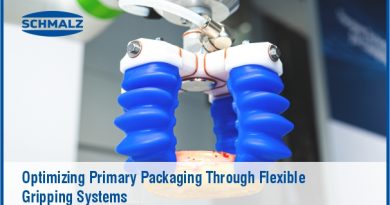Digitalization and Client Transparency
This article will discuss:
• Client transparency and its importance in the manufacturing industry
• The benefits of client transparency to manufacturers
• How digitalization of the factory enables client transparency and supports the implementation of transparency initiatives
Clients want transparency. Transparent processes build trust between product or service providers and the customers using produced goods. Enterprises across every industrial sector including manufacturing know this and understand the importance of transparency, but when push comes to shove many organizations shy away from providing comprehensive transparency. The reason businesses run away from client transparency can be traced to the considerable reputational cost that comes with failing to meet customer demands. Thus, businesses focus on solving issues behind the
scenes and provide customers with the finished product.
Client transparency and the manufacturing industry
Product recalls are a constant feature within the manufacturing industry. Examples include the recall of approximately 500,000 washing machines in the United Kingdom and the 63 million vehicle recalls caused by faulty Takata airbags globally. These recalls were traced to operational issues that occurred during specific manufacturing cycles. Customers affected by recalls and government regulation agencies believe that improved manufacturing transparency can reduce the recall numbers. Including customers and regulators in the manufacturing process ensures that possible defects are discovered during production. This reduces the costs associated with recalls and the corresponding loss of a segment of the business’s customer base. Client transparency refers to the inclusion of clients in every step of the manufacturing process. This transparency starts when an order is made and includes information concerning production materials, supply chains, equipment, and the post-processing process. Several factors affect the ability of manufacturers to be completely transparent with clients. The challenges manufacturers face with delivering transparency are unique. One cannot compare the task involved with including clients in the content-creation process of a digital agency to what is required to navigate the hot and rugged environment of the average factory floor. Thus, the factors affecting client transparency are industry-specific and they include:
• The harsh environment of the manufacturing floor
• Detailed information about supply-chain partners may not be readily available
• Challenges with implementing the technologies required to deliver transparency
• Investments in transparency may not deliver quick returns
Enabling client transparency with digitalization
The digitalization of the factory comes with the integration of diverse digital technologies that can help alleviate the challenges associated with client transparency. Thus, manufacturers which have digitized a large percentage of their manufacturing processes will find it easier to expand their digitalization strategies to include delivering transparency. For example, implementing an expansive IoT network to track the temperature at which raw materials are transported can be expanded to include tracking at supply locations. Digitalization and other interrelated processes enable manufacturers to capture data from complex operations. The captured data creates an accurate picture of these manufacturing processes to be mapped out, analyzed, and visualized. Digitalization technologies such as IoT devices, smart devices, and edge-computing hardware can capture data from most operations. The captured data can then be analyzed using the industrial cloud to ensure that processed information is provided to customers using language they understand. When there is a need to provide contextual information to customers, visualization technologies come into the picture. Web-based HMIs and mobile apps provide manufacturers with options to transfer information to customers who are interested in tracking the progress of ordered products. Web-based HMIs make use of interactive animations and graphs to relay information to an audience. These HMIs can also be accessed using the average browser app, which is when their role as a client-transparency enabler comes into the picture.
Applications that support the contextual translation and visualization of manufacturing information provide a means to integrate customers into the manufacturing process. Thus, customers can simply log in to manufacturing apps to view the current status of their order in real-time. Digital transformation hardware also provides manufacturers with the means to navigate the harsh environment of the average manufacturing floor and transfer data to the customer. Manufacturing floors are exposed to increased temperatures, oil spillage, and electromagnetic waves that the average laptop cannot withstand. Industrial smart devices such as the eSmart Series can function at their optimal capacity within the manufacturing facility.
Industrial smart devices can interface with equipment on the factory floor. Although these smart devices are designed to support human-to-machine communication, they can also interface with the cloud. Thus, smart devices can be used to transfer information from the factory floor to the cloud and the customers to integrate them into the production process.
The benefits of client transparency
• Improves operational performance – Utilizing digitalization to deliver transparency sets the stage for
improved operational efficiency. Once customers have been included in the manufacturing process, it
becomes crucial to get order fulfilment, throughput quality, and customer experiences right because your
brand’s reputation is on the line. The added incentive of pleasing the customer ensures everyone functions
optimally to meet delivery expectations.
• Increased revenue – Today’s customer requires accountability and stays loyal to brands that can deliver
transparency. Client transparency that leads to improved operational efficiency will keep customers loyal,
which, in turn, results in recurrent sales and customers selling your brand through word of mouth.
• Build trust with customers – Earning the trust of your customers is the first step to retaining their busi-
ness. For original equipment manufacturers, customer trust in the goods you offer influences their buying
decisions. Customers who are involved in the manufacturing process will see and appreciate the effort
put into producing the goods they purchase. A customer’s understanding of the process also makes them
more likely to stick with you through setbacks.
Conclusion
The decision to fully include clients in the manufacturing process is an individual choice for every organiza-
tion. The application of digitalization changes the situation for manufacturing enterprises that have decided,
so far, not to choose transparency due to challenges with informing customers. Digitalization of the factory
floor provides the tools that can be applied to integrate customers into the manufacturing process.



